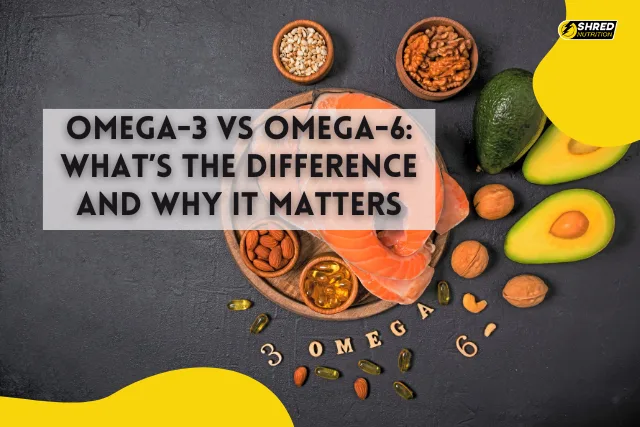When it comes to healthy fats, Omega-3 and Omega-6 fatty acids are two essential nutrients your body needs to function properly. But despite being “healthy fats,” they play very different roles in your health—and maintaining the right balance between them is crucial.
In this article, we’ll explore the difference between Omega-3 and Omega-6, their health benefits, ideal ratio, and how you can get the right balance through food and supplements.
What Are Omega Fatty Acids?
Omega fatty acids are a type of polyunsaturated fat that your body cannot produce on its own. That’s why they’re called essential fatty acids (EFAs)—you must get them through your diet.
There are two main types:
- Omega-3 Fatty Acids
- Omega-6 Fatty Acids
Although both are important, the modern diet tends to have too much Omega-6 and too little Omega-3, which can lead to health problems.
What Are Omega-3 Fatty Acids?
Omega-3s are anti-inflammatory fats that play a vital role in:
- Brain function & mental health
- Heart health & lowering cholesterol
- Reducing inflammation in joints
- Supporting eye health
- Improving skin & hair health
There are three main types of Omega-3:
- ALA (Alpha-linolenic acid) – Found in plant sources like flaxseeds, chia seeds, and walnuts.
- EPA (Eicosapentaenoic acid) – Found in fatty fish like salmon, mackerel, and fish oil supplements.
- DHA (Docosahexaenoic acid) – Crucial for brain and eye health, mainly found in fish and algae.
Since your body converts ALA to EPA and DHA very inefficiently, getting direct sources of EPA and DHA is important.
What Are Omega-6 Fatty Acids?
Omega-6s are also essential fats, but they are pro-inflammatory, meaning they promote inflammation in the body. While inflammation is necessary for healing wounds and fighting infections, too much chronic inflammation can lead to health issues like heart disease, arthritis, and obesity.
The most common Omega-6 is Linoleic Acid (LA), which is found in:
- Vegetable oils (corn, sunflower, soybean oil)
- Processed and fried foods
- Nuts and seeds
Omega-6 isn’t “bad,” but the problem is the imbalance between Omega-3 and Omega-6 in modern diets.
Omega-3 vs Omega-6: The Key Difference
The main difference between Omega-3 and Omega-6 fatty acids lies in their effects on inflammation:
Omega-3 fatty acids → Anti-inflammatory
Omega-6 fatty acids → Pro-inflammatory
Your body needs both to function properly. For example:
- Omega-3 reduces inflammation, supports heart & brain health
- Omega-6 helps with wound healing and immune response
But when you consume too much Omega-6 and not enough Omega-3, it can lead to chronic inflammation, increasing the risk of lifestyle diseases.
Health Benefits of Balancing Omega-3 and Omega-6
When you correct the imbalance by increasing Omega-3 intake and reducing excess Omega-6, you may experience:
- Better heart health (lower risk of heart disease)
- Reduced joint pain and stiffness
- Improved mental clarity and mood
- Healthier skin and reduced acne
- Better blood sugar control
How to Get the Right Balance of Omega-3 and Omega-6
Here’s how you can optimize your Omega intake naturally:
Increase Omega-3 Intake
- Eat fatty fish like salmon, mackerel, sardines 2–3 times a week.
- Add chia seeds, flaxseeds, and walnuts to your diet.
- Consider Omega-3 supplements (fish oil or algae oil for vegans).
Reduce Excess Omega-6
- Limit processed & fried foods.
- Avoid excessive vegetable oils (corn, soybean, sunflower).
- Cook with healthier fats like olive oil or avocado oil.
Do You Need an Omega-3 Supplement?
If you don’t eat fish regularly, or your diet is high in processed foods, you likely need an Omega-3 supplement.
Look for supplements with:
- High EPA & DHA content
- Molecularly distilled or purified fish oil
- Third-party tested for purity
For vegetarians and vegans, algae-based Omega-3 supplements are a great alternative.










